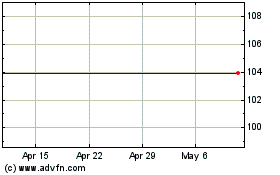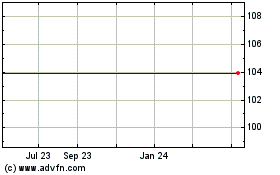Survey Finds Organizations Are Realizing Significant Benefits by Adopting “Bring Your Own” Device Policies
July 26 2011 - 5:00PM
Business Wire
Citrix Systems, Inc. (NASDAQ:CTXS) today announced the results
of the Citrix Bring-Your-Own (BYO) Index revealing that 92 percent
of IT organizations are aware that employees are using their own
devices in the workplace and 94 percent intend to have a formal BYO
policy in place by mid-2013, up from 44 percent today. The research
found that attracting and retaining the highest quality talent,
increased worker productivity and mobility and greater employee
satisfaction, as well as reducing IT costs, are the primary drivers
of BYO adoption.
“There are two reasons that BYO is being embraced within
organizations,” stated Mick Hollison, vice president, Desktop
Marketing & Strategy, for Citrix. “There are those that are
using BYO to keep up with the rapid consumerization of enterprise
IT and then there are forward-thinking CIOs who have embraced BYO
as a way to attract the best talent, encourage a flexible working
environment and raise productivity levels.”
Desktop Virtualization is a Key Enabler
Sixty two percent of surveyed organizations indicated that they
have already invested or plan to invest in desktop virtualization,
technology that allows organizations to manage Windows-based
desktops centrally in the datacenter, then deliver them to all
types of users across the enterprise. Eighty percent of those
organizations intend to leverage their desktop virtualization
investment to support employee-owned devices and BYO. This trend is
driven by the fact that desktop virtualization addresses the two
key challenges cited by survey participants – security and device
management. By enabling IT to centrally manage and secure desktops,
applications, and data in the datacenter, business information is
always secure. Even when data is stored on the end point device, IT
has the ability to remotely erase data in the event the device is
lost or stolen. Desktop virtualization makes it possible for IT to
deliver desktops and apps straight from the datacenter to any
device, making device management radically simpler.
“Desktop virtualization enables IT to fundamentally rethink the
way user hardware is provisioned by making a reliance on a limited
number of corporate-standard PCs, laptops and smartphones a thing
of the past,” stated Hollison. “It also provides a safe way of
delivering a desktop to any employee, on any device, wherever they
are, with the a consistent high definition user experience.”
Evolution of Devices will be a Driver
The survey also revealed that the types of devices used by
workers will continue to evolve in the coming years. The most
popular devices brought into the workplace today are the laptop and
smartphone. However, most companies anticipate that within two
years, the use of tablet computers as the primary personal
computing device will rise significantly to almost 23 percent from
just 8 percent today. IT decision-makers also believe they will
need to manage a wide range of tablet platforms by 2013 including
Apple iOS, Android, Blackberry and Windows. Desktop virtualization
technologies will make it possible for IT to support this growing
device diversity with a universal way to deliver desktops and apps
from the datacenter.
Other Key Findings
- The primary benefits of BYO are
improved employee satisfaction at 57 percent, increased worker
productivity at 52 percent, greater mobility for workers at 51
percent, more flexible work environments for employees at 46
percent and reduced IT costs at 36 percent.
- Forty-four percent of organizations
intend to pay employees a stipend roughly equivalent to the cost of
its own IT department procuring and managing a comparable device
and 31 percent plan to help offset some of the cost.
- Ninety four percent of IT decision
makers indicated that the introduction of a BYO policy has
predominantly been led by the IT department. They also noted that
other departments are getting involved in the development of BYO
policies with Human Resources participating in 39 percent of
organizations, Legal in 35 percent and Finance departments in 29
percent.
Related Links
- Whitepaper: IT Organizations Embrace
Bring-Your-Own Devices
- Webpage: Citrix BYO
solutions
- Expert blog: Flying Free: My First
30 Days as a Citrix Remote Employee
- Expert blog: My experience with
Desktop as a Service (DaaS) and why I think Desktop as a Device is
Dead!
- Expert blog: A Look at Bring Your
Own Devices in the Enterprise
- Expert blog: Getting Consumerization
Right With Citrix and Microsoft
Follow Us Online
- Twitter: @Citrix,
@xendesktop
Sample size
The research for the Citrix BYO Index was conducted
independently by Vanson Bourne in May 2011, and is based on 700 IT
professionals across seven markets. One hundred IT professionals
were surveyed in each of seven markets including: Australia,
Canada, Germany, India, Netherlands, United States and United
Kingdom. In each country, half of the respondents represented
companies of 500-1,000 employees and the other half work for
companies of 1,000+ employees.
About Citrix
Citrix Systems, Inc. (NASDAQ:CTXS) is a leading provider of
virtual computing solutions that help people work and play from
anywhere on any device. More than 230,000 enterprises rely on
Citrix to create better ways for people, IT and business to work
through virtual meetings, desktops and datacenters. Citrix
virtualization, networking and cloud solutions deliver over 100
million corporate desktops and touch 75 percent of Internet users
each day. Citrix partners with over 10,000 companies in 100
countries. Annual revenue in 2010 was $1.87 billion.
Citrix Systems (NASDAQ:CTXS)
Historical Stock Chart
From Jul 2024 to Jul 2024

Citrix Systems (NASDAQ:CTXS)
Historical Stock Chart
From Jul 2023 to Jul 2024
